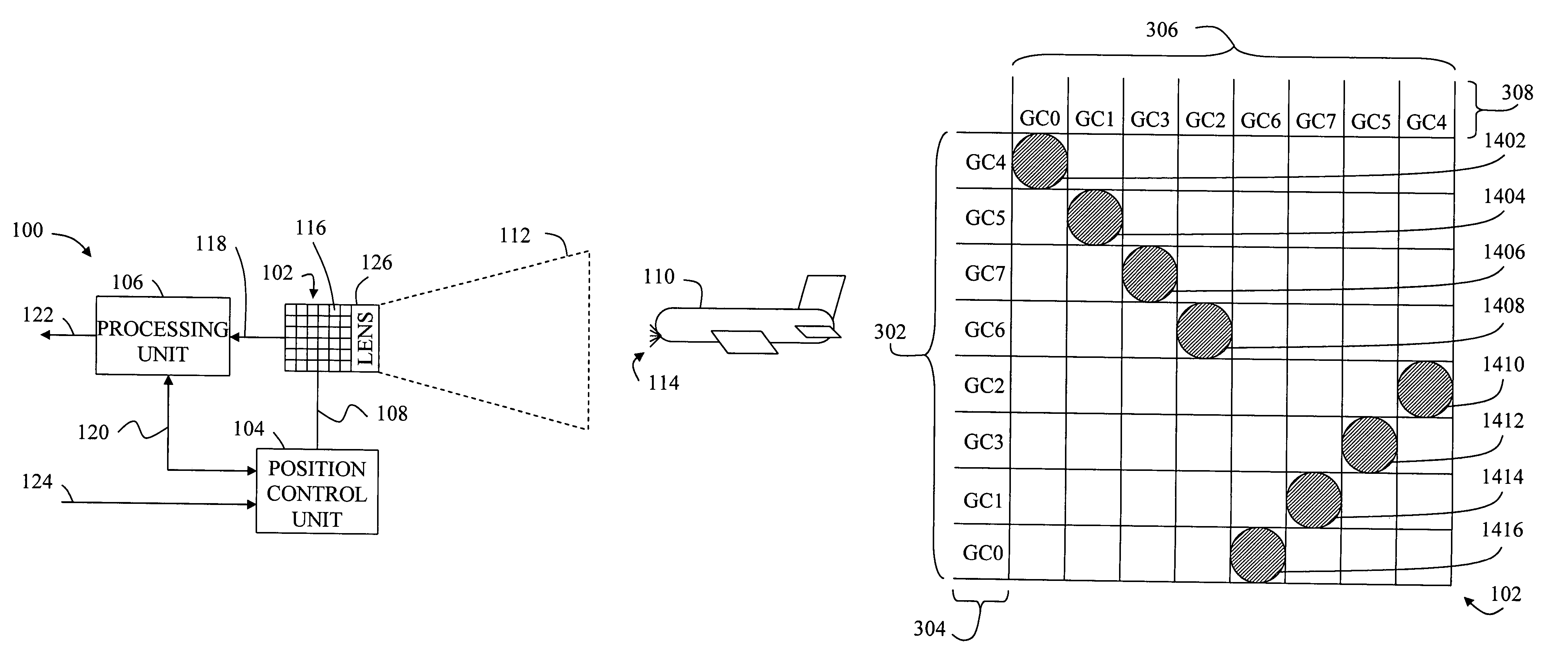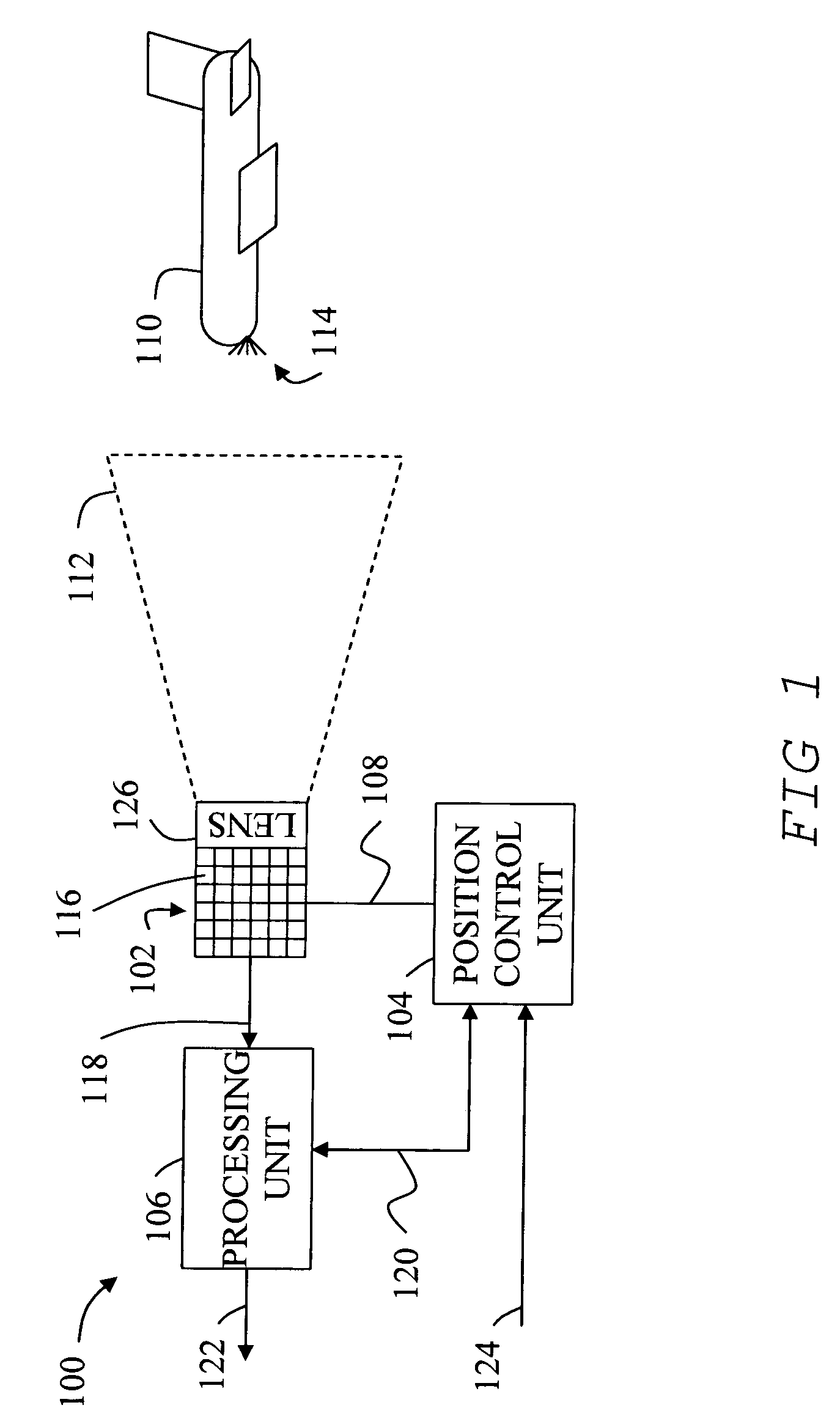Optical sensing apparatus and method for determining highest intensity of light in an array
a technology of optical sensing apparatus and array, applied in the field of optical sensors, can solve the problems of increased latency, complex support electronics, adversely affecting the performance of closed-loop tracking algorithms,
- Summary
- Abstract
- Description
- Claims
- Application Information
AI Technical Summary
Benefits of technology
Problems solved by technology
Method used
Image
Examples
Embodiment Construction
[0034]The present invention, as defined in the claims, provides for low latency, continuously valid image information and target position detection with a minimum of support and processing electronics.
[0035]FIG. 1 shows one embodiment of an optical sensing system 100 including a Customized Focal Plane Array (CFPA) 102, a position control unit 104, a processing unit 106, and imaging optics 126. Position control unit 104 is operatively connected through a support mechanism 108 to CFPA 102 in order to control the angular position and elevation angle so that CFPA 102 can be positioned so that illumination from an object 110 within a field of view 112 will be focused and reimaged onto CFPA 102. Illumination from an object can include reflected or emitted light 114. For the purposes of this disclosure, light 114 can include any electromagnetic radiation that can be detected as disclosed including infrared to ultraviolet light. Further, support mechanism can include any mechanism for point...
PUM
 Login to View More
Login to View More Abstract
Description
Claims
Application Information
 Login to View More
Login to View More - R&D
- Intellectual Property
- Life Sciences
- Materials
- Tech Scout
- Unparalleled Data Quality
- Higher Quality Content
- 60% Fewer Hallucinations
Browse by: Latest US Patents, China's latest patents, Technical Efficacy Thesaurus, Application Domain, Technology Topic, Popular Technical Reports.
© 2025 PatSnap. All rights reserved.Legal|Privacy policy|Modern Slavery Act Transparency Statement|Sitemap|About US| Contact US: help@patsnap.com



